Winter chicken keeping is not as challenging as it sounds. Once you get the cold weather logistics figured out, caring for your flock during the winter should be pretty similar to other times of the year, with just a few management changes. The cold weather’s main affect on poultry is that it requires more energy for them to stay warm. You can help your flock cope with this challenge by doing simple things that generate heat and help them conserve energy. These are 8 winter chicken keeping tips that I do for my flock every winter!
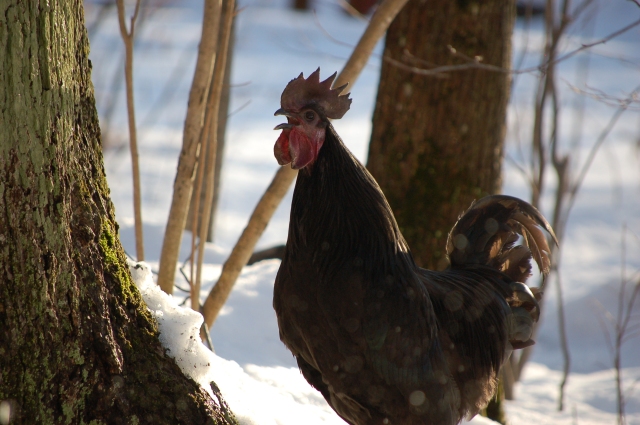
This post may contain affiliate links. See our Disclosure for more information.
#1. Free Range when Possible
Northern winters are very unpredictable. Sometimes we get lots of snow early on (which means a white Christmas!), other times it’s like an Indian summer on Christmas day. When there is little or no snow, it means the chicken have more opportunity to free-range.
Whenever there is a sunny and moderately warm day I open up the enclosure door for any adventurous soul. Usually the Svart Hona’s and May (the Cochin) take advantage and go dust bath under the coop. If there is any grassy patches in the yard I select a few special chickens to get some greens in!
Letting them free-range gets the blood flowing which helps with circulation. Good circulation means they will be able to stay warm easier. The forage during the winter is not highly nutritional, but at least it adds variety to the diet and the flock can enjoy free-ranging for their food, which is a natural instinct. The activity and variety in routine will also help prevent boredom and the issues that it can present.
Keep in mind that predators may also be out and active at this time too. With the leaves off of the trees, flying predators will have a better chance at striking. Supervised free-range is best during this time of the year.
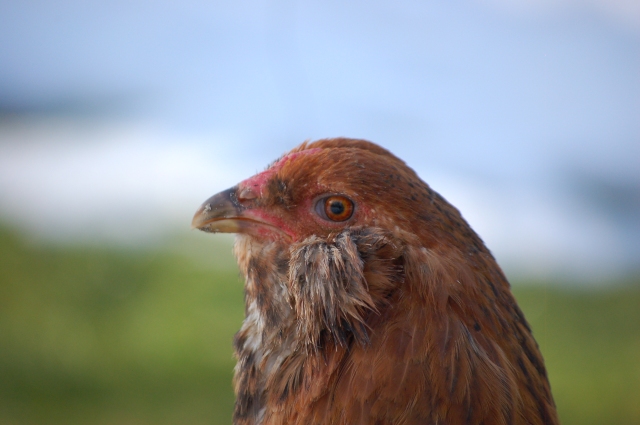
#2. Prevent Frostbite
Frostbite is one of the main health concerns in regions that experience cold temperatures and extreme weather conditions. It can occur when circulation is restricted to certain body parts, when moisture freezes on the skin, or when extremities are exposed to extreme weather for a prolonged period of time.
Chickens that have tall combs and long wattles need extra care on cold nights to keep them from getting frostbite. Hens and some roosters will tuck their heads in their wings which helps, but tall combs still stick out. I put a beeswax-based salve on the combs and wattles that need a little more protection during the single-digit nights. Beeswax-based salves are better than petroleum-based creams since the oil actually traps moisture instead of protecting against it.
Frostbite is mostly caused by moisture and exposure. To keep moisture to a minimum in your coop and to reduce exposure, do a few simple things:
- have good ventilation
- don’t heat the coop
- avoid excess water surface area
- winterize the coop properly
For tips on how to prevent and treat frostbite, be sure to check out my post on Frightful Frostbite.
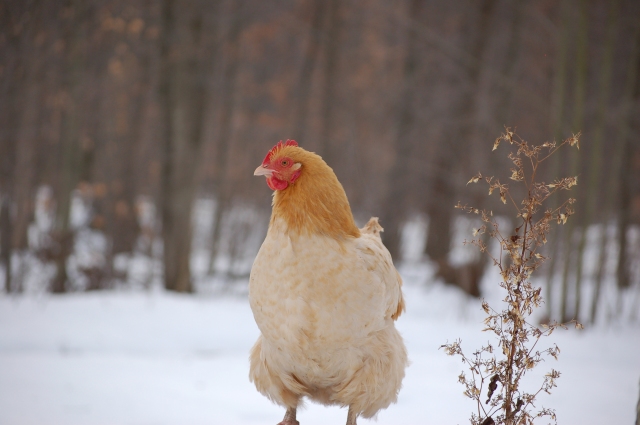
#3. Don’t Heat the Coop
In my post, Do Chickens Need Heat During the Winter?, I answer that common winter chicken keeping question. I also go into further details on heat for the flock during the winter in my comprehensive guide to Winter Chicken Keeping!
Now, if you checked out my post discussing whether chickens need heat or not, you will find out that I actually do recommend supplemental heat under certain conditions. However, this does not mean you should heat the coop!
Chickens do not need a heated coop. If allowed to properly acclimate to the colder weather, they will be healthier and safer without a heated coop. Not only do certain heating methods create a fire hazard, but they also make your flock reliant on the warmer temperatures. Then, if the electricity goes out, the chickens are exposed to sudden coldness. A chicken that has been used to heat will be put under sudden stress when exposed to cold temperatures.
There are more natural ways that you can help your flock stay warm this winter. The more chickens you have the more heat they will produce. Usually the temperature inside your coop will be a few degrees warmer then outside because of the chicken’s body heat. The type of litter you use can also help your coop stay warmer.
For tips on how to keep your chickens warm throughout the winter without adding supplemental heat, check out my post on Keeping Chickens Warm during the Winter!
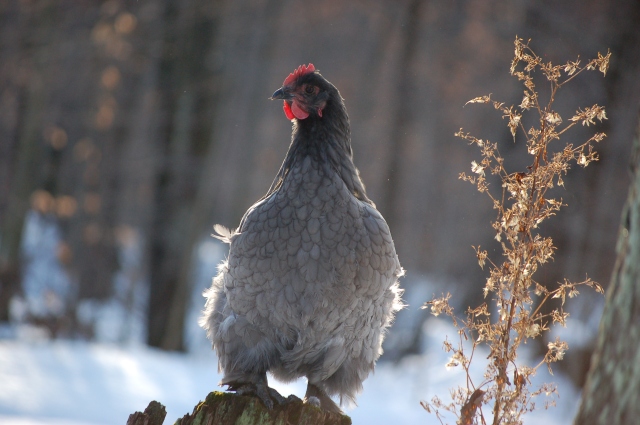
#4. Pick Cold Hardy Chicken Breeds
Northern chicken keepers have the responsibility of choosing chicken breeds to include in their flock who can handle the cold weather. Some chicken breeds are bred for tolerating cold temperatures, these are considered cold hardy breeds.
Chicken breeds that are accepted into the American Poultry Association are put into classes. Certain breed classes are known to handle cold weather better. In general, chicken breeds in the American, English, and Asiatic classes are more cold tolerant where as breeds in the Continental and Mediterranean classes are more heat tolerant.
Cold hardy breeds usually have more feathers and/or small combs and wattles. A chicken fluffs out its feathers to capture warm air against its body. The more feathers it has, the more warm air it can trap. Feathered shanks and toes also help prevent frostbitten toes.
Here are a few good cold hardy breeds:
- Ameracaunas
- Orpingtons
- Australorps
- Cochins
- Brahmas
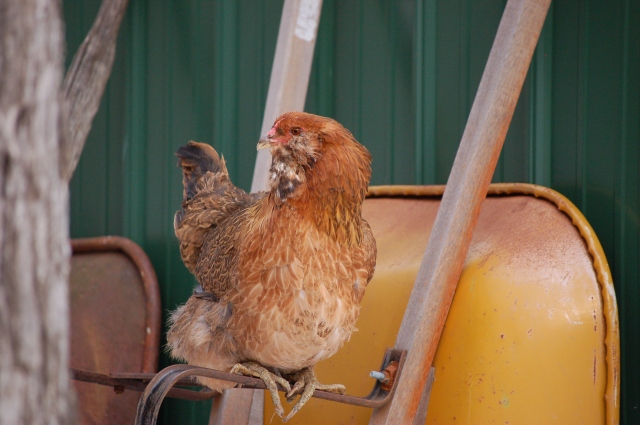
#5. Provide Perches
Added perching space is always welcome in the winter months. Perching allows a chicken an opportunity to both stay warm and conserve energy. Of course, prolonged time spent on the perch could be a sign of lethargy and disease, but periodic perching during cold weather is normal. Your flock is trying to conserve energy in between going about their normal activities, such as eating, dust bathing, and foraging in their enclosure.
Including fun perches in your flock’s enclosure can also be a good boredom busters. Changing up the perches ever so often will keep your flock on their toes and encourage them to explore their environment.
Providing perches with a flat top but rounded edges helps prevent frostbite on the toes. When the chicken perches, it can cover its feet with its feathers. Having perches in sheltered places is also beneficial for your flock so that they can minimize their exposure to weather elements.
My chickens love perching on the various roosts I have in their enclosure. A few perch ideas that my chickens love are:
- stick ladder
- tree branches
- stumps
Also, chickens do not need heated roosts. They may sound like a nice accommodation but the same rule about not heating the coop applies to the roosts as well.
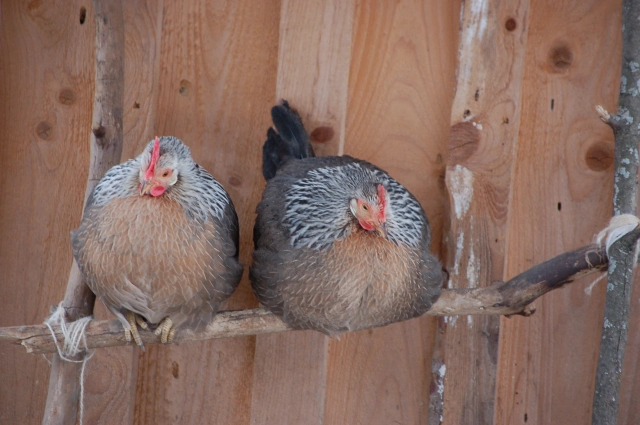
#6. Offer Warm Treats
Warm treats can be beneficial during the winter. They can provide extra warmth that the chickens don’t have to expend extra energy to get. Just like we enjoy a cup of hot cocoa on a cold day, your flock will enjoy warm foods that will warm them from the inside out.
The type of warm treats you provide for your flock does matter. You want the treats to be healthy and beneficial for your flock. High protein treats are always a good choice since increased protein can help your flock stay warm and healthy. Whether its a few more handfuls of mixed grains or a cup of sunflower seeds, the extra energy will be used to replace the energy lost trying to stay warm.
Here are some warm treats that I like to give my chickens:
- Oatmeal– check out my post on, Is Oatmeal Good for Chickens?
- Heated meat scraps– excellent source of meat-based protein
- Leftover squash skins– a warm treat that is very nutritious
- Heated feed- an excellent substitute for oatmeal!
To Make Heated Feed: Take the chicken’s regular feed and mix it into some boiling water, let it simmer until it turns into a thick porridge. Let it cool to room temperature before serving to your flock This is the ideal treat since you are technically giving them what they would normally eat and they like it just as much as oatmeal!
Just remember, give treats in moderation! Treats should make up no more than 10% of a flock’s daily diet. I like to give my flock treats in the late afternoon or evening which gives them time to eat their layer feed before having ‘dessert’.
High protein treats before bed can help chickens stay warm as their body metabolizes the food throughout the night. If you want to bring out a warm treat in the morning for your flock, opt for a healthy and nutritious treat like heated feed, quinoa, or squash skins.
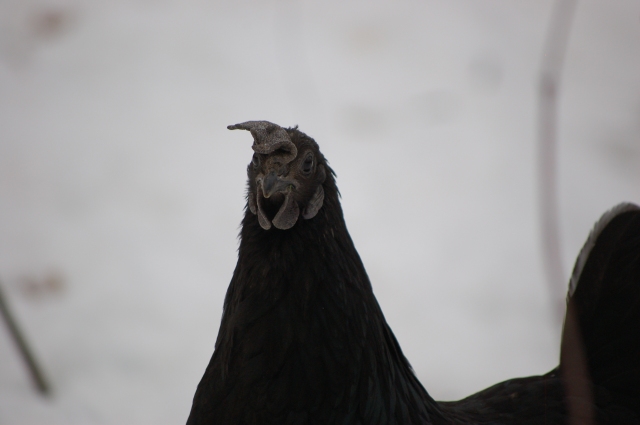
#7. Use Straw
Straw is an excellent resource for norther chicken keepers! Straw doesn’t have to be just used as a coop litter. It can be used in the enclosure too!
Every fall I put straw out in my enclosure for my chickens. A thick bed of straw provides extra warmth and entertainment. Chickens love scratching around in the straw looking for bugs and seeds. When the straw starts composting, the bacteria and other processes occurring during the composting creates heat.
You do have to do a little straw maintenance every week no matter where you use the straw (whether its in the coop or the enclosure). Once the chickens have scratched and trampled the first layer of straw down, you will have rake it up and fluff it so that the composting process gets oxygenated. After the old litter has been turned, you can place a fresh layer on top for your flock to enjoy! Make sure you remove wet straw or straw that becomes matted with droppings.
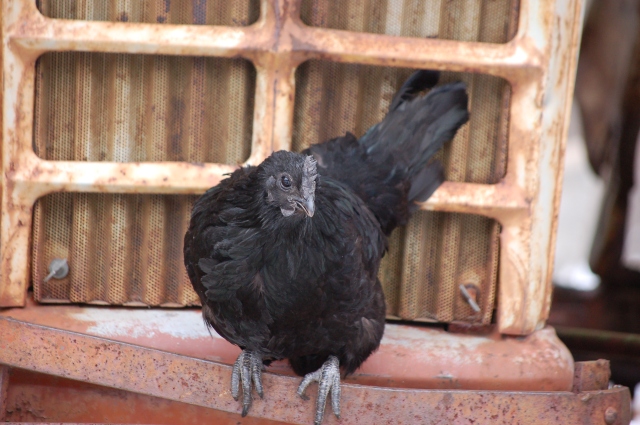
#8. Provide Entertainment
Boredom is a key thing to prevent in the winter months. Bored chickens will start eating more and start picking on each other. Boredom can also lead to bullying and disruptions in the pecking order. Preventing boredom during the winter is essential for keeping a happy and healthy flock.
Boredom busters can help keep your flock entertained while they are cooped up in their enclosure. A few fun boredom busters that my flock enjoy include:
- homemade quinoa suet cakes
- pine boughs
- popcorn and cranberry garland
- straw
- free-ranging
- new and different roosting options
Another healthy boredom buster that I like to create for my flock is a dried bug and whole grain scratch mix. Black soldier fly larvae and black oil sunflower seeds are the primary ingredients, along with additional whole oats and other seeds. This mix, when sprinkled in the enclosure, will keep my flock entertained for quite a while as they sort through the straw to find the treats.
For more healthy boredom busters, check out my post on 8 Healthy Boredom Busters for Backyard Chickens.

These winter chicken keeping tips will ensure that your flock stays warm, healthy, and happy this winter! Tips like free-ranging, offering warm treats, and boredom busters help promote good circulation which helps your flock stay warm and entertained. Frostbite prevention, not heat reliance, and healthy treats will help your flock stay healthy this winter too. Hopefully with these 8 winter chicken keeping tips, winter chicken keeping will be simple and fun for you and your homestead flock!
Our weekly pioneer newsletter also includes some great winter chicken keeping tips and my ebook, The Complete Guide to Winter Chicken Keeping, covers everything you need to know to keep your flock safe, healthy, and happy this winter!
Warm wishes from the flock!
by Alexa




















Leave a Reply